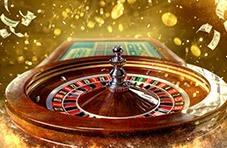Most people fantasize no deposit casino bonus casino thieves as being like the Ocean's 11/12/13 films. In those movies, masterminds pull off amazing thefts in their bid to make off with the casino’s money. The Hollywood antics spark viewers’ imagination as moviegoers watch the “hero thieves” use gadgets, math, and co-conspirators who are working on the inside to rob casinos of millions of dollars.
In truth, land-based and online casino security is so tight that, although people try to pull off scams and robberies, they almost never succeed. That doesn’t stop people from trying, especially at the roulette table which seems to attract n’er do wells.
Some of the more inventive attempted roulette cheats in recent years include
Ohio
In 2012 a New York crime gang arrived in Ohio to carry out a roulette scam. The Ohio Casino Control Commission reported that the group consisted of about 50-70 people who would enter a roulette game in pairs. One of the gang would enter a game with a low bet and, while the 2nd partner distracted the dealer, that gang member would pocket some of the chips.
The gang member would pass the chips to another member of the gang in secret and then the 2nd member would hit another table where a higher value was assigned to that chip’s color. The 2nd scammer could then cash out at the new rate.
Some members of the group were caught and imprisoned but most of the group fled and, gaming officials believe, moved on to try the con at other casinos in other states.
To date, no one knows for sure how many scammers are still out there or if they’re still actively hustling.
France
One of the greatest roulette scams took place in France in 1973 at the Casino Deauville. It involved a casino roulette dealer, his brother-in-law, and the brother-in-law’s sister.
The dealer was an amateur radio enthusiast. He created a radio transmitter which he could fit into a pack of cigarettes. He turned another receiver into a roulette ball and he used that ball at his table.
The dealer’s brother-in-law posed as a player while the sister held the cigarette pack and served as the “button pusher.” She would stand one table over to remain inconspicuous, press the transmitter’s button and the ball would descend from its spin and land in groups of six possible numbers. The scam worked with a 90% accuracy.
In just one week, the trio managed to win close to $1 million USD. Casino officials became suspicious. After checking everything from a defective wheel to the possibility that the dealer was corrupt, the casino owner began to notice that the sister was always in the casino whenever the same player was at the same roulette table, winning cash.
The casino owner suspected radio interference and the team was caught.
London
In 2004 scammers hit the Ritz Casino in London and made off with approximately $2.1 million USD using laser technology.
Officials believe that the gang used “sector targeting,” to figure the “decaying orbit” of the ball and devise a prediction of where the ball would land.
Casino investigators found that the group used laser scanners, embedded in phones and connected to a computer, to predict the winning numbers. The scanner would judge the roulette ball’s speed and then suggest the numbers where it was likeliest that the ball would land. Members of the group could make quick calculations to place their bets before the ball made its final rotation.
The gang was arrested. However, “sector targeting” wasn’t, at that time, considered cheating, so they were released and allowed to keep their winnings.
Las Vegas
Gonzalo Garcia-Pelayo of Spain cracked the code of the roulette wheel and won over $1.5 million in Vegas. Garcia-Pelayo figured early on that roulette wheels aren’t perfectly random and he used a computer to analyze the probabilities of the game.
Garcia-Pelayo saw that, due to imperfections in the reel, certain numbers fall more often than others. After trying out his theory in Madrid Garcia-Pelayo headed to Las Vegas where he collected almost $2 million until he was banned by the casinos that analyzed what he was doing and deemed his method unethical.
Garcia-Pelayo fought the ban successfully in the US Supreme Court but his run was over and he wasn’t welcomed back into the casinos. However, he forced the casinos to acknowledge that the performance of the roulette wheels is uneven. Due to his demonstration of how one could scam the system, today, all casinos throughout the world check their roulette wheels on a regular basis to try to isolate any type of wheel bias.
University of California Santa Cruz
A group of students at the University of California Santa Cruz, self-named the Eudaemons, used an oscilloscope and a camera to track of the motion of the roulette wheel. The students were then able to come up with a mathematical formula that could predict the pocket into which a tossed ball would land in the wheel.
The students built a mini-calculator – small enough to fit into a shoe -- into which they could feed data about the ball and the wheel. The computer would relay an electronic signal to an output system that was strapped to the chest of a participating player. By vibration, the computer would indicate on which of the 8 octants of the roulette wheel it was advised to bet – or not to bet at all.
The system involved an observer and a bettor. After the observer tapped input signals with his foot the signals would be relayed to the bettor through a device strapped under his shirt. All in all the group collected about $10,000 but the scheme ended when the solenoids, which delivered the electronic impulses, burned a hole into one of the groups’ skin.




